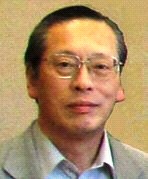| Vol.4 No3 |
|||
| Academic Articles | |||
| Vol.4, No.4(2013) p.116 - p.141 | |||
Special Issue 7Resent Situation of Performance Demonstration (PD) Program in Europe, Asia and USA. |
|||
|
Relevant Field [Nondestructive examination, Ultrasonic examination,] | |||
| Keywords | Nuclear Power Plant, Pipe Wall Thinning, Flow Accelerated Corrosion, Liquid Droplet Impingement, Nondestructive Inspection | ||
| Preface | |||
|
Ultrasonic examination (UT) is one of widely applied nondestructive inspection technique for the structural component of the power generation plant, the chemical plant, and other many plants in the industry. Especially in the nuclear power, the detection and the sizing of flaws by UT at the in-service inspection (ISI) have very important role for evaluating the structural integrity/safety, and the plant life management. Therefore higher skill of UT, such as flaw detection capability and flaw sizing accuracy, is demanded for the inspection at the nuclear power plant rather than other field. In order to certify such high skill of UT examination, the higher rank personal qualification system named performance demonstration (PD) program has been developed and implemented in many countries. In this special issue, the four papers which explain the recent situation of PD program or the personal qualification system in the nuclear field are invited from Sweden, Korea, Japan, and USA. (Paper from USA are scheduled to publish in the next issue/Vol.5-No.1) |
|||
| |||
|
Tommy Zettervall Many countries are currently considering their approaches to inspection qualification and risk-informed in-service inspection (RI-ISI) and are carefully assessing experience data. In Europe most of the utilities operating nuclear power plants have joined together to form the European Network for Inspection Qualification ENIQ. In practice, qualification can be performed with varying degrees of complexity and cost, varying from capability statement based on existing evidence, through to an extensive qualification consisting of a detailed Technical Justification (TJ) together with open and blind trials on full-scale test blocks. An Inspection Qualification is an investigation and demonstration, which confirm that an inspection system has the ability to solve its specific tasks. The qualification is a Quality Assurance of an inspection system based on documents and practical trials. A reliable inspection system, based on a reliable qualification and correct prerequisites, will reduce total costs for Licensees and increase the credibility of the inspection result. To get such inspection system, which could be valid for many years, it’s of necessity to fulfil all included parts in the process. It begins with the Technical Specification from Licensee, where input data and requirements about the actual component are specified. To get an inspection system that could live over time, the Technical Justification is of importance. Finally the test blocks and used simulation techniques play an important part of the final result, and these test blocks together with TJ form the basis for qualification body’s decision. Hajime SHOHJI, Koichiro HIDE , Keiji WATANABE The 1st Japanese Performance Demonstration (PD) qualification examination started in March of 2006 and was operated by the Performance Demonstration (PD) center of Central Research Institute of Electric Power Industry (CRIEPI). As of December 2012, 36 examination sessions have been completed and 44 out of 48 candidates have passed the examination. The total number of tests administered including re-tests was 87. A reason for failure is “the incorrect choice of the crack tip echo”. Candidates cannot differentiate the weld to base metal interface echoes and crack branch echoes from the actual crack tip echo. It was noted that depth sizing using phased array and conventional angle beam tip diffraction techniques is the most effective way to pass the examination. A statistical analysis shows that the average depth sizing error is 0.33mm with a standard deviation of 1.92mm for the successful applicant. The primary reason for failure is the overestimation of the crack depth. Yongsik KIM, Byungsik YOON, and Seunghan YANG The results of ultrasonic testing performed during in-service inspection period for main components of nuclear power plant are affected by the performance of each inspector. To enhance the reliability of inspection, the more restrictive qualification is required. The ASME B&PV code section XI adopted the performance demonstration requirements (Appendix VIII) for the ultrasonic examination of nuclear power plants in the 1989 winter addenda for the first time to enhance the inspection reliability. Korea Hydro & Nuclear Power Co. LTD (KHNP) has developed Korean Performance Demonstration (KPD) system for the ultrasonic examination to apply for pressurized light-water and pressurized heavy-water reactor power plants weld in accordance with ASME code section XI. This paper describes the current status of the ultrasonic examination performance demonstration for nuclear power plant in-service inspection in Korea. | |||






